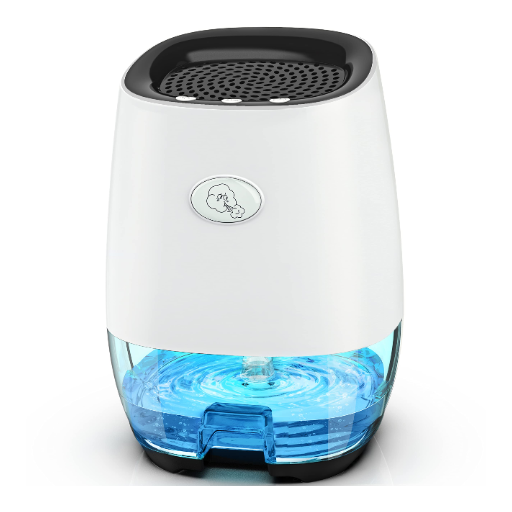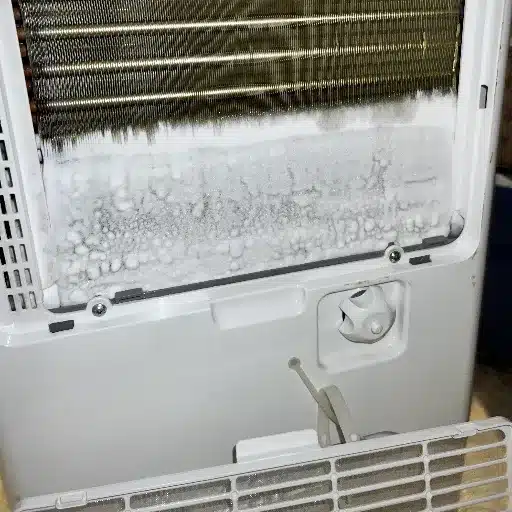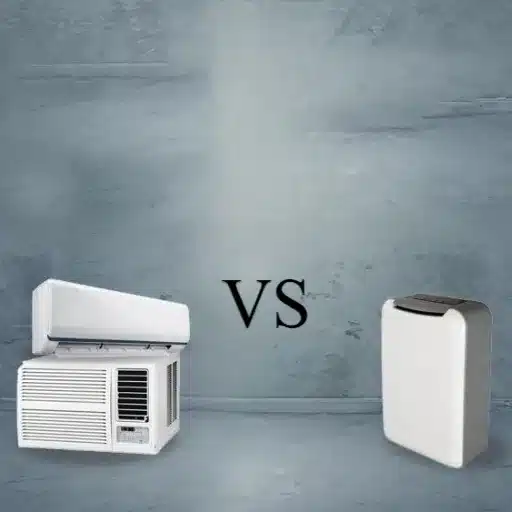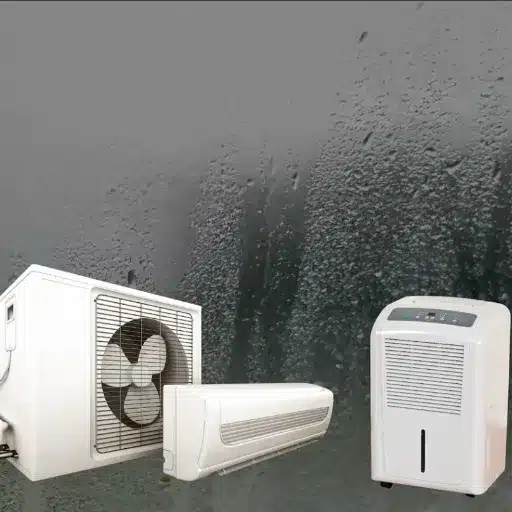Excess moisture in a small bathroom can lead to a host of problems, from unpleasant odors to the rapid growth of mold and mildew, which can impact both the aesthetics of the space and the health of its occupants. Maintaining an optimal humidity level is crucial to ensuring your bathroom remains a clean, comfortable, and safe environment. This article explores the role of a dehumidifier as an effective solution for tackling excess moisture in compact bathroom spaces. We’ll provide insights into how dehumidifiers work, their benefits, and key factors to consider when selecting the right one for your needs. Whether you’re concerned about damp walls, persistent humidity, or improving air quality, this guide offers detailed strategies to create a healthier and more enjoyable bathroom environment.
Introduction to Bathroom Humidity
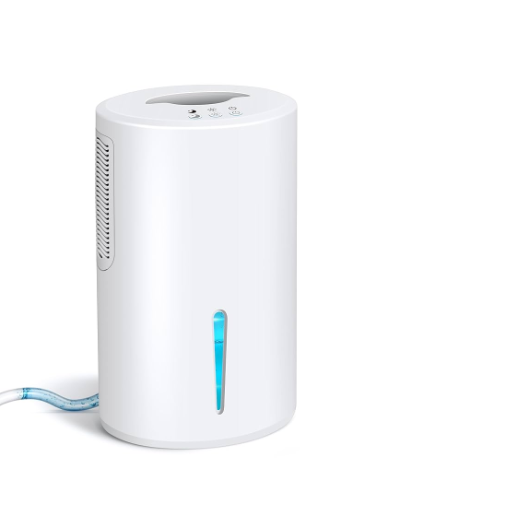
Common Challenges of Excess Moisture in Small Bathrooms
Being small, bathrooms have a few more challenges regarding moisture control, where space often is not an issue, but often ventilation is poor. One major problem is when condensation builds on the walls, on the ceilings, or on the mirrors whenever warm and humid air comes in contact with relatively cooler surfaces. A continuous presence of moisture is then a suitable medium for mold and mildew to turn out to be threats to the durability of the bathroom and, most importantly, the health of its users.
Another major obstacle would be a lack of wind flow. Poorly ventilated or windowless small bathrooms trap humidity after people use the bathroom for showering or bathing. In the absence of proper ventilation, moisture hangs on and bacteria and mold grow on it, plus the stench serves as a very persistent memory of the drama. Furthering the dampness accumulation, this stagnant air also might warp some wooden facilities and lift the paint or wallpaper.
Lastly, persistent humidity is harmful to cleanliness and internal air quality. Having too much moisture provides a perfect breeding ground for allergens and microbes, which makes cleaning much harder. Those without technical fixes to counter moisture, like dehumidifiers or exhaust fans, will find the problem far worse; thereby underpinning the importance of mitigation for moisture so as to allow one to live in a better environment.
Why a Dehumidifier is a Practical Solution
A dehumidifier is an essential appliance for moisture control in the bathroom, especially in spaces where ventilation is poor. The dehumidifier serves to pull excess water vapor from the air so that optimum atmospheric humidity is maintained, thus reducing the chance of mold, mildew, and bacterial growth. In the meantime, an optimum moisture level could lessen the health risk of exposure to allergens and respiratory ailments. Reliable studies, including the ones endorsed by the Environmental Protection Agency (EPA), have highlighted the need for controlling humidity levels indoors to sustain good health.
Also, dehumidifiers preserve the longevity of bathroom-based materials. The high humidity level in operation tends to mar grout, drywall, paint, and wooden materials over time. By having this moisture going down into the dehumidifier, it directly prevents these areas from peeling paint and the wooden area from warping, and eventually costing a lot of money for remediation. These days, most dehumidifiers have energy-saving operational modes, so they control moisture levels efficiently with less energy, making it an economically and environmentally conscious choice.
Using a dehumidifier solves comfort issues that come with the sticky feeling of humidity in the bathroom. They complement exhaust fans by supplementing moisture control; they become particularly handy during cold months when pure ventilation cannot suffice. Being judiciously simple to install and operate, investing in a dehumidifier is a wise investment to have on the bathroom maintenance shelf.
Overview of Benefits of Using a Dehumidifier
Depending on the context considered, a wide variety of benefits are associated with dehumidifiers that could be gained in controlling air quality inside and moisture problems inside a building. The principal advantage of this equipment, however, is the inhibition of mold and mildew growth, for these fungi grow faster in settings with high humidity levels. Dehumidifiers are said to keep the relative humidity level below 50 percent, thereby creating an unfavorable environment for the germination of mold spores that may undermine the structural elements and cause respiratory problems through mold exposure.
Dehumidifiers, by their very nature, also prevent HVAC systems from consuming energy in excess and thereby keep their longevity intact. At one stage, high moisture content stresses the cooling systems, challenging the governance of desired temperatures, leading to higher energy utilization. If there is a dehumidifier running along with the air conditioner, cooling is thermally well-regulated, and energy savings are accrued over a long span. Thus, dehumidifiers also aid in providing a protective coastal environment and, hence, preserve all the precious materials used in furniture and floorings that otherwise begin to deteriorate under moisture attacks in a short period, including wood warping, rusting of metal components, and deterioration of fabrics.
In terms of air quality, dehumidifiers also lessen airborne allergens by controlling dust mites and other irritants that flourish in humid conditions. For those who suffer from allergic reactions or asthma, the lowering of humidity levels produces a huge step toward an increased level of comfort and health for the indoors. When it comes to controlling indoor humidity in homes and commercial spaces, the modern dehumidifier features all-new technology that includes the ability of the device to detect humidity levels and an energy-efficient compressor to provide wind at precisely controlled moisture levels while consuming very little energy. It requires little effort to run one of these; therefore, a green way to regulate humidity has been introduced into commercial and home spaces.
Benefits of a Dehumidifier in Small Bathrooms
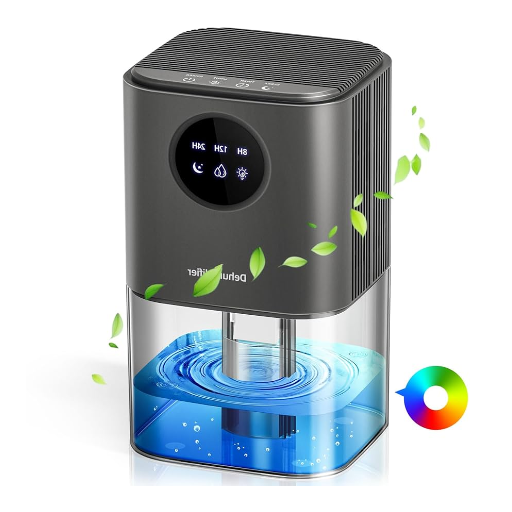
Preventing Mold Growth and Mildew
In smaller-style bathrooms, the dehumidifier plays an integral part in ensuring a mold and mildew -and mildew-resistant environment. In essence, mold germinates best when there is moisture left to persist, especially in places with little ventilation and high humidity, like a bathroom. By dropping the ambient humidity levels to a figure below 50%, this household giant dehumidifier greatly reduces mold spore germination and growth. The newer dehumidifiers, which have built-in state-of-the-art sensors, will give a continuous readout of humidity levels; such mechanisms help keep moisture under control consistently, and hence the environment remains hostile to fungal growth.
Research shows that mildew is generally a surface fungus that grows in damp areas and produces unsightly stains with the accompanying putrid smell. Apart from its aesthetic dilemma, these molds and mildews can pose health hazards, especially for people who suffer from respiratory problems, allergies, or depressed immune systems. The dehumidifier, by reducing moisture content, works against these hazards. When temperatures are kept steady in combination with checked humidity levels, it almost becomes impossible for mildew to grow and prosper; therefore, keeping the space clean and healthy.
Furthermore, modern dehumidifiers offer energy-efficient drying to smaller enclosed spaces like bathrooms. In contrast with traditional methods of moisture control, such as opening the windows or only relying on exhaust fans, dehumidifiers seal the deal about two times of moisture removal, irrespective of weather conditions outside. Frequent use of the dehumidifier, paired with regularly cleaning and maintaining the unit, would only boost its efficiency for controlling mold and mildew in your bathrooms. A technological intervention that offers immediate short-term benefits towards sustaining a healthier and comfortable indoor atmosphere in the future.
Reducing Odors and Improving Air Quality
Effective odor control and corresponding air quality enhancement inside the relatively enclosed space of a bathroom require a series of various ventilation systems and some degree of air filtration processes. Dehumidifiers maintain the disappearance of excess moisture, which in turn greatly lowers the buildup of mold, mildew, and bacteria that produce odors. These can exchange their stale-air modules with exhaust fans, so that the air is continually circulated at an optimal level of humidity. On top of this, modern dehumidifiers often intend to carry activated carbon filters that lock odor particles down and work strongly toward maintaining an ever-fresh environment.
Another tool for improving air quality is the use of High-Efficiency Particulate Air (HEPA) filters in air purifiers. They help to remove airborne particles down to 0.3 microns, including dust, pet dander, and allergens that contribute-little-by-little to the capacity of an atmosphere to feel numb or unpleasant. Portable air purifier HEPA-ISE equipment for bathrooms can assist in reducing contaminants from external sources (such as window leaks or poor sealing) from entering the bathroom while also ensuring that air circulated from inside is free of pollutants.
Recent studies have renewed the importance of maintaining indoor air quality by linking poor air conditions to respiratory problems and a long list of other health hazards. Data-backed solutions such as humidity sensors and air quality monitors allow adjustments to conditions with pinpoint precision in real time. When these fairly modern inventions are built upon more classical and comprehensive air management frameworks, they yield immediate effects, such as a reduction in odor, while also opening greater horizons of health living where chronic environmental pollutant listings hold no effect.
Protecting Fixtures and Walls from Moisture Damage
Effective protection of fixtures and walls from moisture damage involves a combination of precautionary measures and advanced technologies. First, I ensure that the space has proper ventilation to keep humidity low. Installing exhaust fans in areas where moisture buildup is prone to occur, like bathrooms and kitchens, is crucial to prevent excess humidity from forming in the first place. This is one of the major methods and assures the prevention of mold growth, peeling paint, and softening of structural materials.
Second, I enforce moisture-resistant properties in the material being used for setting up or refurbishing to add a layer of protection. For example, water-resistant drywall, vinyl coatings, and treated wood work well in areas exposed to moisture in high quantities of moisture. Also, check the cracks and waterproof coatings on exterior walls for seepage and to retain the structural integrity of the building.
Last, I keep maintenance and monitoring on top of my list. Regular inspection for leaks or condensation, or sightings of water intrusion, guarantees that problems are dealt with promptly and do not become worse. The use of moisture meters can be just another useful method to detect problem areas early. The combination of good maintenance, smart construction, and contemporary technology has kept me very successful in limiting damage due to moisture and enhancing the life of both fixtures and walls.
Key Factors When Choosing a Dehumidifier
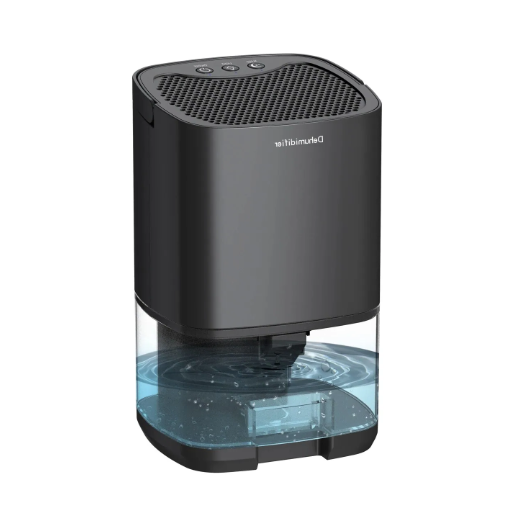
Size and Capacity Considerations
Choosing capacity and size for a dehumidifier is very crucial for its moisture-controlling effectiveness. The size of a dehumidifier usually implies its dimensions, which must be suitable for the space it serves for efficient working without posing any obstruction. The capacity, on the other hand, is said to be the working strength of the unit to extract moisture from the air. Usually, capacity is measured by PPD, which means pints removed per day. To choose the right capacity, your calculations will include the square footage of the room against how much moisture is present. For example, mildly damp areas might only require 30 PPD dehumidifiers, whereas very wet areas might demand anything from 70 PPD.
Another important factor is the set of environmental conditions within the space. Areas where humidity gets well up, either due to the locale, poor ventilation, or water damage, need special load dehumidifiers. The more moisture basements or bigger spaces collect, the more highly rated models are needed to control high moisture levels satisfactorily. In addition to this, other features you might want to look at are those related to energy efficiency: an ENERGY STAR rating is one way to be assured that it will work well, without driving up your energy costs.
Finally, many modern dehumidifiers have features such as adjustable humidistats, continuous drain options, and smart integration for automated control. Such intelligent features afford flexibility and efficiency in managing environments of different sizes and humidity levels. An analysis of size, capacity, and features relative to room conditions will help select the best complementing dehumidifier functionally and economically, thereby ensuring better environment management and structural durability.
Noise Level and Its Impact on Usage
A high noise level from the dehumidifier becomes problematic while evaluating its siting suitability. Noise, in general, is frequently expressed in decibels (dB). A good measure of a dehumidifier ranges between 40 and 60 dB, which corresponds to the ambient sound level of a library or an office, respectively. Of course, noise tolerance is situational: for example, louder models are not suited for bedrooms, nurseries, or home offices where silence is golden.
The quieter compressors, specially designed fan blades, and insulating casing designs do bear the hallmark of a technological evolution in keeping operational noises down without compromising performance. Lower noise levels would be typical of models operating below 50 dB and would be most welcomed in spaces needing sound sensitivity. Different fan speed settings and sleep modes on many modern units further allow compromise-alternating between performance and acoustics at various times of the day.
The relevance of noise impacts for these spaces with high humidity, i.e., basements and commercial ones, is an equally important consideration. Noise stands a little low in ranking here, provided that the ground softening of moisture takes precedence over comfort in sound. Hence, the parallel analysis of operational sound data and user-experience values drives the actual window in balancing noise tolerability versus functional output.
Comparison of the Best Small Dehumidifiers
Features, Pros, and Cons of Each Model
Here is a brief rundown of the features, advantages, and disadvantages of SDLC models:
- Waterfall: Sequential and simple; dependent on a rigid structure, with testing coming late in the process.
- Agile: Iterative and adaptive; lacks a defined structure, has scope creep issues.
- V-Model: Testing carried out in parallelly; rigid and resource-hungry.
- Spiral: Risk-driven and highly flexible; heavy charges on any project it undertakes, and confusing.
- Incremental: Deliveries made partially; costly and suffers from integration issues.
|
Model |
Features |
Pros |
Cons |
|---|---|---|---|
|
Waterfall |
Sequential |
Simple |
Rigid |
|
Agile |
Iterative |
Adaptive |
Unstructured |
|
V-Model |
Parallel |
Quality |
Resource |
|
Spiral |
Risk-focused |
Flexible |
Costly |
|
Incremental |
Partial |
Early use |
Integration |
Price Points and Value for Money
Price points for dehumidifiers are quite problematic when balancing out the purchase cost against long-term efficiency, upkeep, and maintenance costs. The cheapest models, however, which would be considered below $50, are geared toward basic dehumidification in smaller spaces such as closets or small offices, and quite often, these budget models cannot offer features such as digital controls for humidity or automatic shutoff functionality, all of which tend to be goodwill builders for consumer convenience and energy efficiency.
Mid-range dehumidifiers, priced anywhere from $50 to $150, generally make a good compromise between features and price, incorporating the best features such as higher moisture extraction capacity between 20 and 30 pints per day, programmable settings, and replacement filters. These dehumidifiers hit a sweet spot in terms of affordability and performance and, therefore, would be the preferred model for medium-sized spaces such as bedrooms or small basements.
More expensive models, priced above $150, will generally boast a higher specification: very fast speed of dehumidification; capable of covering an area of up to 1,500 square feet; energy efficient, often having Energy Star certification. Such options are beneficial to users who require heavy-duty and long-lasting solutions for their problem-ridden big spaces, such as basements or commercial areas.
In terms of price economies, the extraction efficiency of the unit with respect to capacity, robustness, and ease of maintenance must be strongly taken into consideration. Power consumption relative to moisture removal efficiency gives a good measure of whether a particular model is going to pay for itself in the long run. Needless to say, warranty and customer support are an important part of price economics, as that support is necessary when problems arise throughout extended use.
Practical Tips for Maintaining Your Dehumidifier
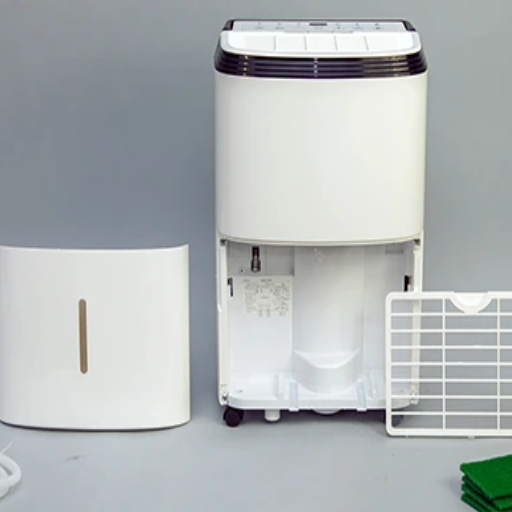
Cleaning Schedules for Optimal Performance
The cleaning of a dehumidifier is an essential job to ensure its efficient functioning and the extended life of the unit. The air filter must be inspected and cleaned at least once every two weeks to ensure good airflow and to keep the motor from straining. Cleaning the filter weekly is advisable when it is used in places where there is much dust or allergens.
The water collection tank gets emptied and cleaned with mild detergent and warm water weekly due to the molding and bacterial growth caused by excessive moisture. In the case of a continuous drain, the drainage hose should be checked for clogs or blockages every month.
Also, clean the condenser coils every three months with compressed air or a soft brush to rid them of dust and dirt, which will hamper heat exchange. It is always advisable to check the manufacturer’s directions for safe cleaning practices. When regular cleaning of the dehumidifier is carried out, there will be less thinning performance and, on the other hand, consumption of energy.
Placement Advice for Maximum Efficiency
For maximum efficiency, the placement of the dehumidifier is extremely important and requires careful consideration of the surroundings and room-specific factors. Ideally, set the dehumidifier in a central spot of the room where moisture accumulation is the highest. With favorable air intake and circulation across the area, the unit would then coherently drain moisture into the space. It must be a few feet away from walls, furniture, or anything obstructing the circulation of air. Many manufacturers recommend an allowance of at least 12-18 inches around all sides so as not to compromise air circulation, which is vital for the best performance of the dehumidifier.
Look into other considerations like the humidity level and air flow of the surroundings while choosing a location. For instance, it may be beneficial for the basement and bathroom to stand close to their major moisture origins, such as windows, plumbing fixtures, or wall cracks where dampness is eminent. If continuous operation through a drainage hose is in the array of the dehumidifier, then placing it near a floor drain or sink would be simpler for disposing of water and make emptying the water tank less frequent. Always look for the possibility of a power outlet first, so you do not have to use an extension cord, which may be risky and inefficient for working.
Also, pay attention to environmental considerations, such as temperature or ventilation. Low temperatures in spaces such as garages or crawl spaces will cause frost buildup on the coils of a conventional unit. If the unit must be located in such conditions, opt for a unit with anti-frost control or one that can be operated in such cold situations. Moreover, guarantee appropriate ventilation so as not to dry out the air completely; completely dry air would adversely affect the structure and contents of the room itself. Precise placement mixed with protocols surrounding these will assure the user of better energy efficiency, longer lifespan of the appliance, and overall indoor air quality.
Maximizing Energy Efficiency During Use
The maximizing of energy efficiency while using climate-control appliances such as dehumidifiers, air conditioners, or heaters involves a series of best practices combined with modern technological systems. First off, ensure the equipment is properly calibrated; an energy-efficient certified product, such as an ENERGY STAR-certified type, can save as much as 30% of energy consumption over a non-certified counterpart. It is also imperative that the filters need to be cleaned or replaced routinely for optimum operation, since clogged filters force a unit to work harder and consume electricity unnecessarily.
Programmable ones will aid in setting the precise temperature and scheduling of programs. Research has shown that a one-degree Fahrenheit reduction in thermostat settings during the heating season will save approximately 1% on energy costs with minimal impact on comfort. Energy-efficient temperatures for most homes in winter are temperatures ranging from 68 to 72 degrees Fahrenheit indoors or 78 to 80 degrees Fahrenheit in summer.
By sealing leaks in doors, windows, and ductwork, you can prevent heat exchange so that these appliances work better, especially in extreme weather conditions. Coupled with a smart-home system or energy monitor, appliances provide a very useful insight into energy usage patterns that help the user make informed decisions for change. Further efficiency is gained by advances in sensor technology that support adaptive performance, where a device self-regulates based on environmental inputs such as humidity or occupancy.
Summarily, proactive maintenance combined with implementing changes to settings and using smart technologies ensures that efficiency in operation and energy savings are optimized, thereby reducing energy bills and consequent environmental impact.
References
-
Improving the energy efficiency of dehumidification technology at a large facility in Florida – Discusses the efficiency of dehumidification technologies.
-
Energy-Efficient Management of Mechanical Ventilation and Relative Humidity in Hot-Humid Climates – Explores energy use and management of dehumidifiers in humid climates.
-
Residential Performance Code Methodology for Crediting Dehumidification and Smart Vent Applications Final Report – Provides insights into dehumidifier specifications and energy factors.
-
It’s in the air! – Highlights mold prevention and the role of dehumidifiers in bathrooms.
-
Evaluation of the Performance of Houses with and without Supplemental Dehumidification in a Hot-Humid Climate – Evaluates energy use and performance of dehumidifiers in residential settings.
Frequently Asked Questions (FAQ)
Q: What is the best dehumidifier for a small bathroom?
A: The best dehumidifier for a small bathroom typically balances efficiency and compact design. Look for a bathroom dehumidifier that can effectively remove moisture, has a suitable pints of water capacity for the space, and features like auto shut-off for convenience.
Q: How does a portable dehumidifier help in reducing humidity?
A: A portable dehumidifier for small bathrooms helps reduce humidity by extracting excess moisture from the air. These units can be easily moved from one room to another and are designed to maintain optimal indoor humidity levels, helping to prevent mold and mildew growth.
Q: Can I use a mini dehumidifier in my bathroom?
A: Yes, using a mini dehumidifier in your bathroom can be effective, especially in small areas. These compact and efficient units are designed to dehumidify spaces without taking up much room, making them perfect for tight spaces.
Q: How often do I need to empty the tank of my bathroom dehumidifier?
A: The frequency of emptying the tank depends on the unit’s capacity and the humidity level in your bathroom. A small dehumidifier with a drain hose can minimize this task by allowing continuous drainage, while others may require more frequent emptying during humid conditions.
Q: What features should I look for in a dehumidifier for a bathroom?
A: When choosing a dehumidifier for your bathroom, look for features such as a built-in pump for easy drainage, a large tank size, portability, and energy efficiency. Additionally, an auto shut-off function can ensure safety when the tank is full.
Q: How does a dehumidifier protect bathroom fixtures?
A: A dehumidifier helps protect bathroom fixtures by removing excess moisture from the air, which can inhibit the growth of mold and mildew. This, in turn, helps maintain a healthy bathroom environment and prolongs the life of your fixtures.
Q: Are there specific dehumidifiers designed for high-humidity areas?
A: Yes, there are dehumidifiers specifically designed for high-humidity areas like bathrooms. These units are equipped to handle greater moisture levels and often feature enhanced technology to effectively extract moisture, ensuring a comfortable indoor environment.

